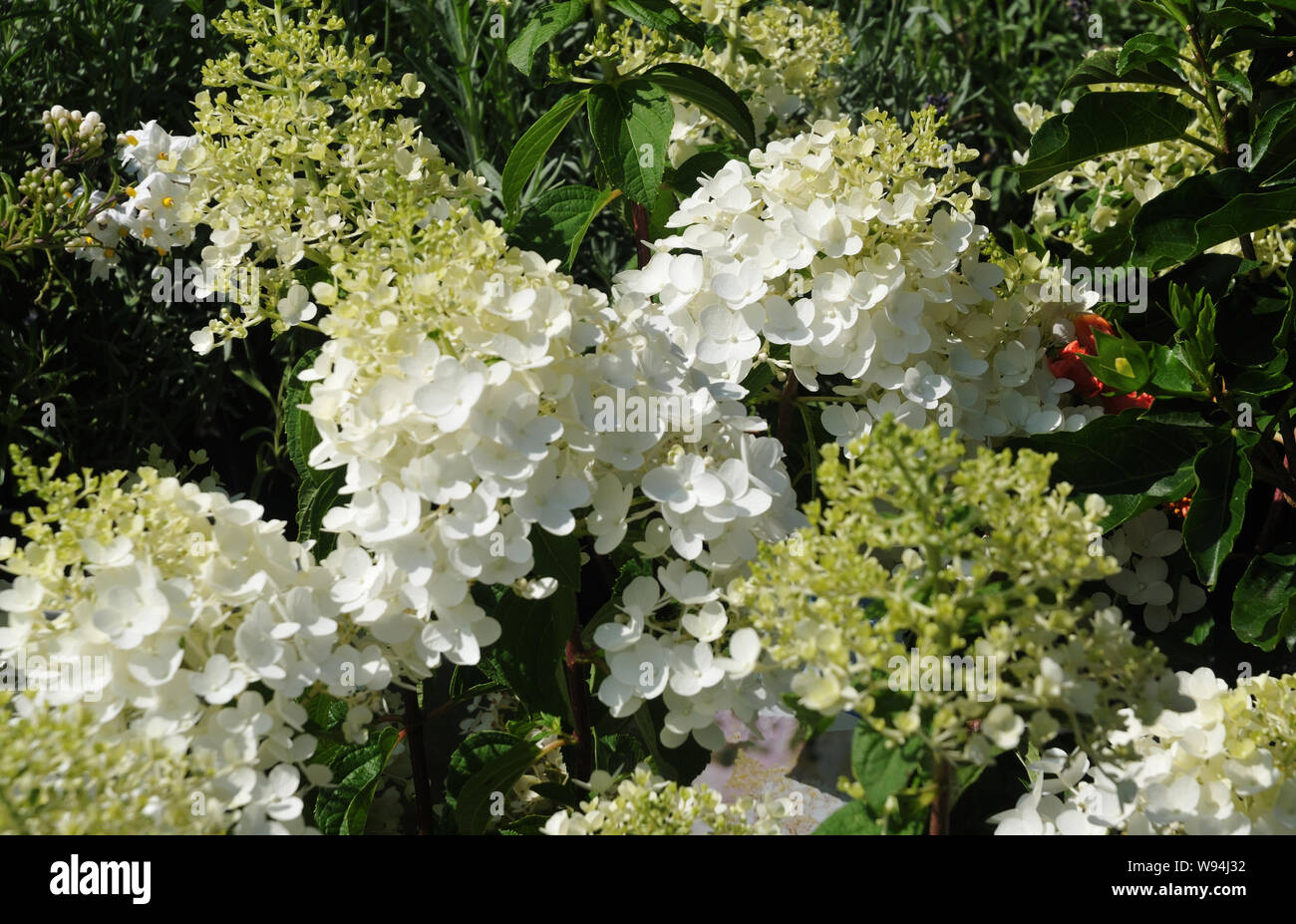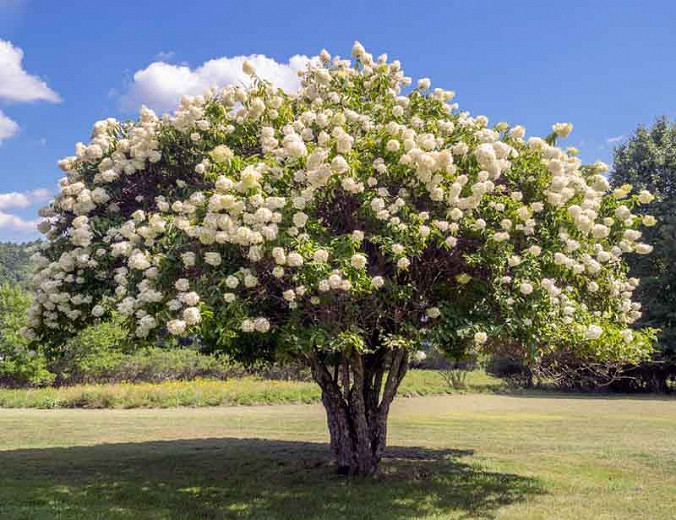The Hortensia Paniculata That Will Make Your Garden
The Hortensia Paniculata That Will Make Your Garden
Hydrangeas are a popular choice for gardeners, and for good reason. They come in a variety of colors, sizes, and shapes, and they can add a touch of elegance to any garden. But if you're looking for a hydrangea that is both beautiful and easy to care for, then you need to consider the hortensia paniculata.
Hortensia paniculata, also known as panicle hydrangea, is a hardy shrub that is native to Asia. It can grow up to 15 feet tall and 6 feet wide, and it produces large, cone-shaped clusters of flowers in the summer. The flowers can be white, pink, or blue, and they often change color as they age.
Panicle hydrangeas are relatively easy to care for. They prefer full sun to partial shade, and they need well-drained soil. They are also drought-tolerant, so you don't need to water them as often as other hydrangeas.
One of the best things about panicle hydrangeas is that they are reliably cold-hardy. They can withstand temperatures down to -20 degrees Fahrenheit, so they can be grown in most parts of the United States.
If you're looking for a hydrangea that will add beauty and interest to your garden for years to come, then the hortensia paniculata is a great choice. It's easy to care for, it's cold-hardy, and it comes in a variety of colors.
Here are some of the benefits of growing hortensia paniculata in your garden:
- They are very easy to care for. They are drought-tolerant and can withstand cold winters.
- They are very versatile. They can be grown in sun or shade, and they can be used as hedges, specimen plants, or cut flowers.
- They are very beautiful. They have large, cone-shaped clusters of flowers that can be white, pink, or blue.
- They are very long-lived. They can live for many years with proper care.
If you are thinking about adding hortensia paniculata to your garden, here are a few tips:
- Choose a sunny or partially shaded location with well-drained soil.
- Water the plant regularly, especially during the first year after planting.
- Fertilize the plant in the spring with a balanced fertilizer.
- Prune the plant in the spring to remove dead or damaged branches.
With proper care, hortensia paniculata will add beauty and interest to your garden for many years to come.
If you're looking for a beautiful and hardy shrub to add to your garden, look no further than the hortensia paniculata. This species of hydrangea is native to Asia and is known for its large, panicle-shaped flowers that can grow up to 12 inches in length. The flowers typically bloom in white or cream, but can also be pink or blue depending on the soil pH.
Hortensia paniculata is a relatively low-maintenance plant that can tolerate a wide range of conditions. It prefers full sun to partial shade and well-drained soil. However, it is also drought-tolerant and can survive in poor soil conditions.
If you're interested in learning more about hortensia paniculata, I recommend visiting . This website has a wealth of information about the plant, including its history, care requirements, and different varieties. You can also find photos and videos of hortensia paniculata in bloom.
FAQ of hortensia paniculata
- What is hydrangea paniculata?
Hydrangea paniculata is a large, deciduous shrub or small tree that is native to East Asia. It is known for its large, panicle-shaped flowers that bloom in the summer. The flowers can be white, pink, blue, or purple, depending on the variety. Hydrangea paniculata is a relatively easy plant to care for and is drought-tolerant. It is a popular choice for landscaping and can be grown in USDA hardiness zones 3-9.
- How do I care for hydrangea paniculata?
Hydrangea paniculata is a relatively easy plant to care for. It prefers full sun to partial shade and well-drained soil. It is important to water hydrangea paniculata regularly, especially during the summer months. Fertilize hydrangea paniculata once a year in the spring with a balanced fertilizer. Prune hydrangea paniculata in the spring after the flowers have faded.
- Why are my hydrangea paniculata flowers white?
The color of hydrangea paniculata flowers is determined by the acidity of the soil. In acidic soil, hydrangea paniculata flowers will be blue. In alkaline soil, hydrangea paniculata flowers will be pink. You can change the color of your hydrangea paniculata flowers by adjusting the acidity of the soil. To make the soil more acidic, add sulfur or aluminum sulfate to the soil. To make the soil more alkaline, add lime.
- How do I propagate hydrangea paniculata?
Hydrangea paniculata can be propagated by division, cuttings, or layering. Division is the most common method of propagation. To divide hydrangea paniculata, dig up the plant in the spring or fall and divide it into several smaller clumps. Plant the clumps in well-drained soil and water them regularly. Cuttings can be taken from hydrangea paniculata in the spring or summer. Choose a healthy, young stem and cut it into 4-6 inch lengths. Remove the lower leaves from the cuttings and plant them in a well-drained potting mix. Keep the cuttings moist and in a warm place. Layering is another method of propagating hydrangea paniculata. To layer hydrangea paniculata, bend a stem down to the ground and bury the tip in the soil. Secure the stem in place with a U-shaped peg. The stem will eventually root and can be cut from the mother plant.
- What are some pests and diseases that affect hydrangea paniculata?
Hydrangea paniculata is susceptible to a few pests and diseases, including aphids, spider mites, scale, powdery mildew, and leaf spot. Aphids are small, soft-bodied insects that can suck the sap from hydrangea paniculata leaves. Spider mites are tiny, eight-legged arachnids that can also suck the sap from hydrangea paniculata leaves. Scale insects are small, oval-shaped insects that attach themselves to hydrangea paniculata stems and leaves. Powdery mildew is a fungal disease that causes a white, powdery coating to form on hydrangea paniculata leaves. Leaf spot is a fungal disease that causes small, brown spots to form on hydrangea paniculata leaves. If you notice any pests or diseases on your hydrangea paniculata, you can treat them with insecticidal soap, neem oil, or horticultural oil.
Image of hortensia paniculata
5 different images of "hortensia paniculata" from Pinterest:
- A large white hortensia paniculata in full bloom, with its flowers cascading down over a fence.

- A close-up of a single hortensia paniculata flower, showing its delicate petals and intricate stamen.

- A group of hortensia paniculata bushes in different shades of pink, purple, and blue.

- A hortensia paniculata tree, with its branches weighed down by large, colorful flowers.

- A hortensia paniculata in a pot, on a sunny patio.

Post a Comment for "The Hortensia Paniculata That Will Make Your Garden"